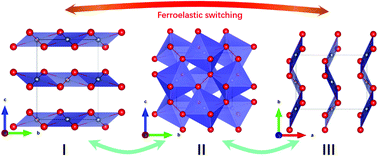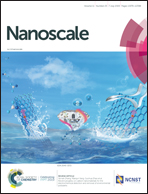Ferroelastic lattice rotation and band-gap engineering in quasi 2D layered-structure PdSe2 under uniaxial stress†
Abstract
Transition metal dichalcogenides (TMDCs) have attracted extensive attention in recent years for their novel physical and chemical properties as well as promising applications in the future. In the present paper, based on first-principles simulations, we focused on the bulk of the TMDC material PdSe2 and provided new insights into its unique structural properties and electronic structures under uniaxial stress. For the first time, we revealed that this orthorhombic PdSe2 is an intrinsic ferroelastic material with stress-driven 90° lattice rotation in the layer stacking direction. Strikingly, the ferroelastic phase transition originated from the bond reconstructions in the unusual square-planar (PdSe4)2− structural units. Specifically, low switching barriers and strong ferroelastic signals rendered room-temperature shape memory accessible. Moreover, the ferroelastic phase transition was accompanied with semiconductor-to-metal-to-semiconductor transitions under uniaxial compressive stress, which could be applied in electronic switching devices. In addition, the band gap was closely associated to the interlayer spacing, which could be engineered by the uniaxial tensile stress. These outstanding stress-engineered properties suggest that orthorhombic PdSe2 is a promising material for potential applications in microelectromechanical and nanoelectronic devices.



 Please wait while we load your content...
Please wait while we load your content...